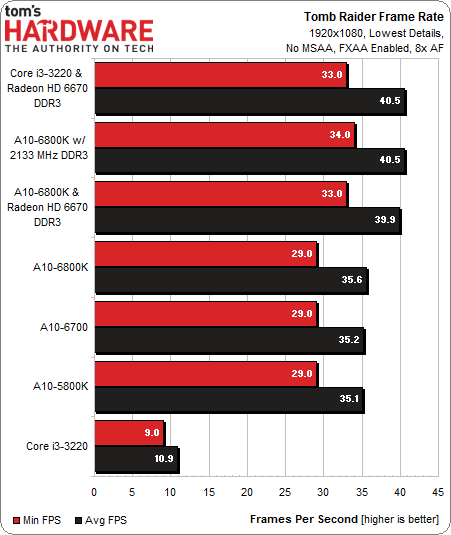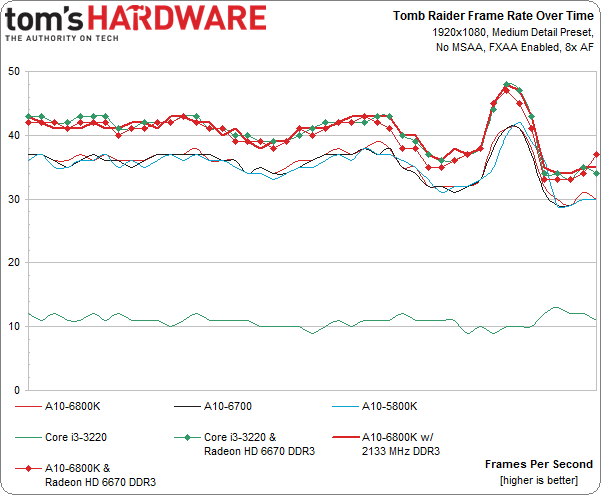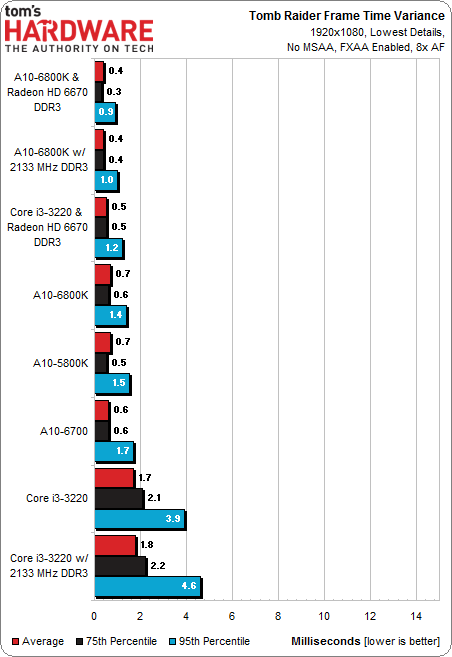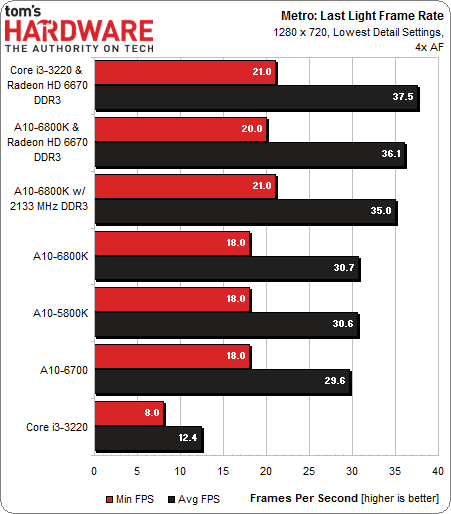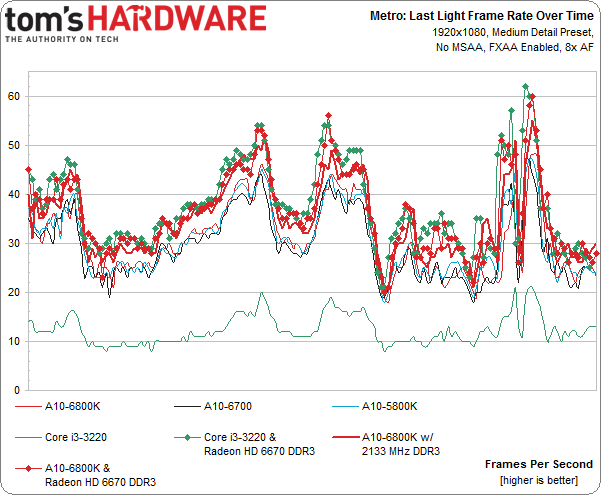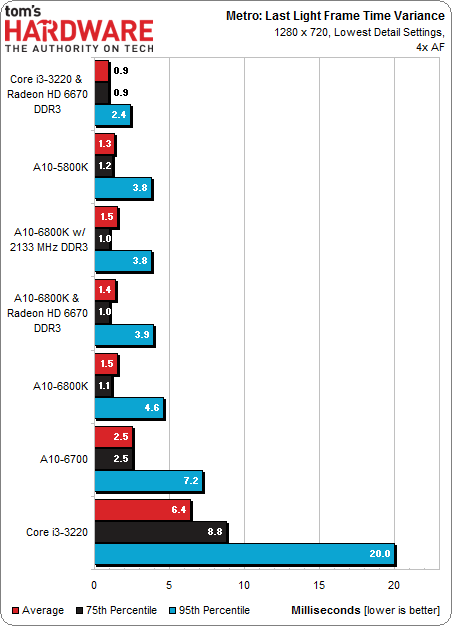AMD A10-6700 And A10-6800K Review: Richland Hits The Desktop
Richland, code name for AMD's highest-end APUs, finds its way into our lab in the form of A10-6700 and A10-6800K. Based on the Piledriver architecture and VLIW4 graphics, these chips are slight improvements to Trinity. Can they outshine Core i3, though?
Results: Tomb Raider And Metro: Last Light
While we're able to run Tomb Raider at 1920x1080 using on-die graphics, we had to drop the quality settings as low as they go (except for keeping FXAA and 8x AF turned on).
Again, we see that HD Graphics 2500 aren't viable in a 3D workload like this. Also again, there's plenty of data in Chris' Core i7-4770K review to show that neither HD Graphics 4000 or HD Graphics 4600 can overtake A10-5800K. So, A10-6800K is probably safe unless Intel decides to enable its GT3/GT3e configuration on the desktop. The company currently has no plans to do this.
Mapping frame rates out over time simply gives us a little extra detail.
Although the variance between subsequent frames appears low in general, we found this title to suffer from noticeable stuttering. Perhaps it was simply a result of lower overall frame rates giving the perception of less-smooth performance.
Metro: Last Light is easily the most demanding title in our suite, requiring us to drop the graphics details to their lowest settings and dial the resolution back to 1280x720. Fortunately, the game still looks good at those settings.
A demanding benchmark sequence pushes frame rates under 20 at times, despite decent averages from the A10 APUs. The discrete Radeon HD 6670 doesn't do any better, and Intel's HD Graphics 2500 isn't viable at all.
As you can see, the APUs manage to maintain frame rates in excess of 30 for much of the test, but are pushed under 20 FPS in several cases. It's tempting to say that you'll see better real-world performance from this title, though we know taxing sequences like the built-in benchmark are when gamers most commonly decry the inability of their hardware to perform.
Get Tom's Hardware's best news and in-depth reviews, straight to your inbox.
Variance between subsequent frames isn't bad, but we simply cannot get around the fact that the experience in this title suffers from frame rates that are simply low.
Current page: Results: Tomb Raider And Metro: Last Light
Prev Page Results: F1 2012 And The Elder Scrolls V: Skyrim Next Page Results: Media EncodingDon Woligroski was a former senior hardware editor for Tom's Hardware. He has covered a wide range of PC hardware topics, including CPUs, GPUs, system building, and emerging technologies.
-
esrever Numbering has never been for the architecture inside the chips. They have always been marketing for the current line of products. Normal people buy a laptop, they see the number, they get the performance associated with said number and they don't care about the inside of the chip. Richland is just a trinity refresh with better power management and higher clocks.Reply -
-Fran- No temps with power metrics page? 8(Reply
I guess Richland is still very hot going by the power figures alone. Still, it's a good step up (and stop gap) for AMD.
Nice review still. Are you guys planning on a follow up for Dual Graphics? 8)
Cheers! -
Wes Young Reply10920935 said:This is dumb. Still 6670 max card for dual graphics. Disappointing.
No, since driver 13.1 even the 5800k was able to run dual graphics with a HD 7750. I am typing on a system with that exact setup right now. I am not sure if the 6800k will allow anything above the 7750 though. When I tried a 7770 with the 5800k I wasn't given the option to enable dual graphics.
